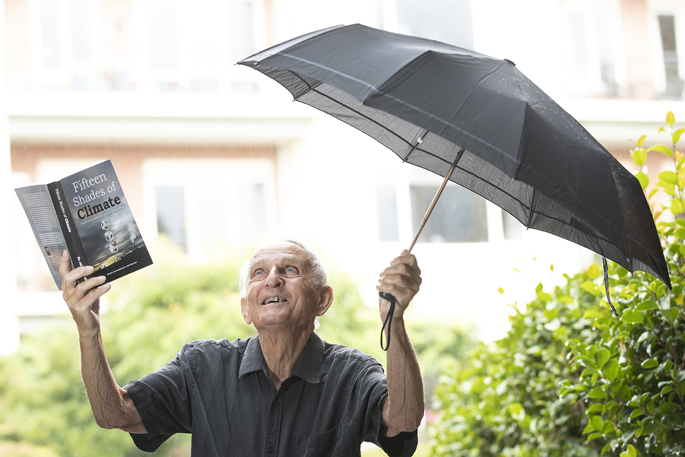OPINION
John Maunder
This week over 70,000 people will attend COP 28, the 27th gathering of the Conference of the Parties dealing with climate change.
By contrast, 38 years ago a small group of 100 scientists met in the small town of Villach in Austria to begin talks on climate change which in effect was, in the minds of many people, the original forerunner of the COP meetings.
Thirty-eight years on, what has changed? Of the many climate science meetings I have been to, the most significant, at least in terms of climate change, was the UN-sponsored International Conference held in Villach, Austria. One hundred experts from 30 countries attended the meeting (in contrast to the many thousand plus who now attend such meetings), and I was privileged to be the only New Zealander invited.
We were all there as experts – and not representing our respective organisations – in various fields of science, endeavouring to do the best we could in looking at the complexities of climate change and climate science. This conference predated by three years the establishment of the Intergovernmental Panel on Climate Change (IPCC) by the World Meteorological Organization (WMO) and the United Nations Environment Programme (UNEP). The first session of the IPCC was held in Geneva in November 1988. In contrast, the first session of COP-1 was not held until 1995 in Berlin.
Among the principal findings of the 1985 Villach Conference was that “while other factors, such as aerosol concentration, changes in solar energy input, and changes in vegetation, may also influence climate, greenhouse gases are likely to be the most important cause of climate change over the next century”.
At that time, even though I was partly responsible for the writing of the above paragraph, I along with some of my colleagues, had some serious misgivings about this phrase, and in particular, the almost overall emphasis on greenhouse gases compared with the natural causes of climate change and in particular the role of the oceans, the sun, and the volcanoes.
These natural causes of climate change are discussed in my 2023 book “Climate Change .. A Realistic Perspective: ” the fall of the weather dice and the butterfly effect”. . Published by Amazon.
Additionally, my 1986 book “The Uncertainty Business: Risks and Opportunities in Weather and Climate” focused on the opportunities provided to humanity in regards to all aspects of the climate… whether it be cold or hot, wet or dry, or something in-between.
However, despite some of my misgivings re the findings of the Villach conference, within a year ‘human-induced global warming’ caught the imagination of much of the world. Indeed today, not an hour goes without some mention within the media of ‘global warming’, ‘climate change’, ‘emission trading schemes’ etc., all terms which until the 1980s were the preserve of academic textbooks.
In 2004, Australian, Bill Kininmonth, wrote a book called Climate Change – A Natural Hazard, which shows clearly the divergence of views on the causes of climate change. The author demonstrated that the model of the climate system represented by the IPCC is inadequate as a foundation for future planning. In a recent paper, Kininmonth has updated the views he expressed in his earlier book.
There are two ‘competing’ views on how the Earth’s climate changes.
The first, as espoused by the IPCC, holds that Earth’s temperature is primarily a function of the properties and atmospheric concentrations of greenhouse gases, and how these gases interact with atmospheric radiation. The second is that Earth’s temperature is regulated by the sun, the atmospheric transport of energy from the tropics to polar regions, and how the rate of transport varies with ocean circulations, particularly the millennial period thermohaline circulation.
My experience suggests that there are two main views on the subject of “global warming” and “climate change”.
First, those who are mainly involved in the Intergovernmental Panel on Climate Change (IPCC) and many or most government and university scientists, plus others, such as Al Gore, many politicians, and most journalists, and probably the public at large, who consider that human activities, including domesticated animals, are the prime cause of the recent and current changes in the climate, and who are actively seeking a consensus to decarbonise society by promoting ‘Net Zero’.
Second, those –a minority of university scientists, many retired meteorologists and climatologists, a minority of politicians and journalists, and probably a minority of the public – who consider that Nature is the main cause of changes in the climate, and that Nature cannot and should not be ignored.
The understanding of the public in this regard stems from the fact that most mainstream media are left of centre and generally follow the party line. This will be well demonstrated at COP-28.
Thirty-eight years ago, it would have been inconceivable that any government in the world would have a “Minister of Climate Change”; indeed back then, as weather forecasters and climatologists we just got on with our job of making the best possible weather forecast and providing the best climate advice to all those who requested information, without guidance or interference from the government of the day.
How things have changed. I will watch COP-28 with considerable interest, with the hope that the 70,000 people attending the meeting will not ignore the importance of the role of nature in the climate change scene.
BUY Your Own Copy of Dr John Maunders book Fifteen Shades of Climate Today.


